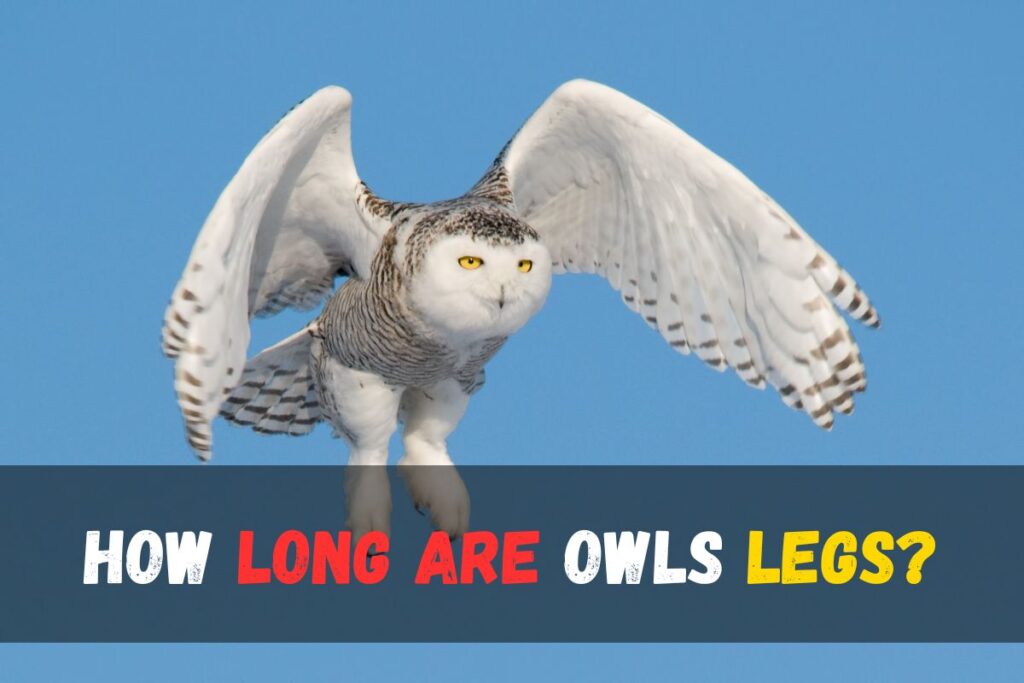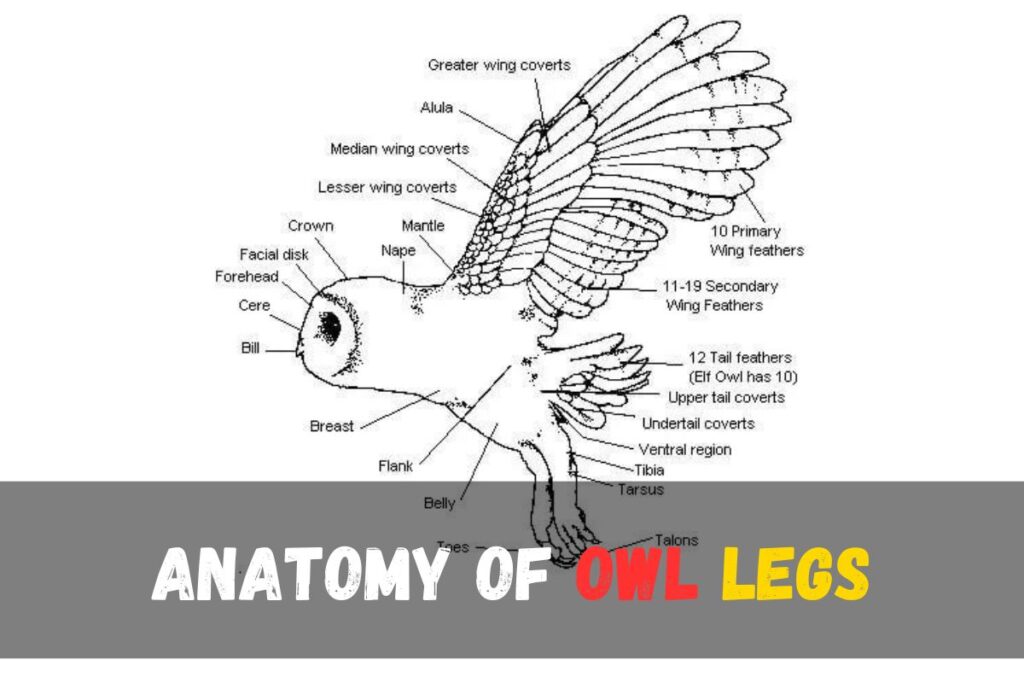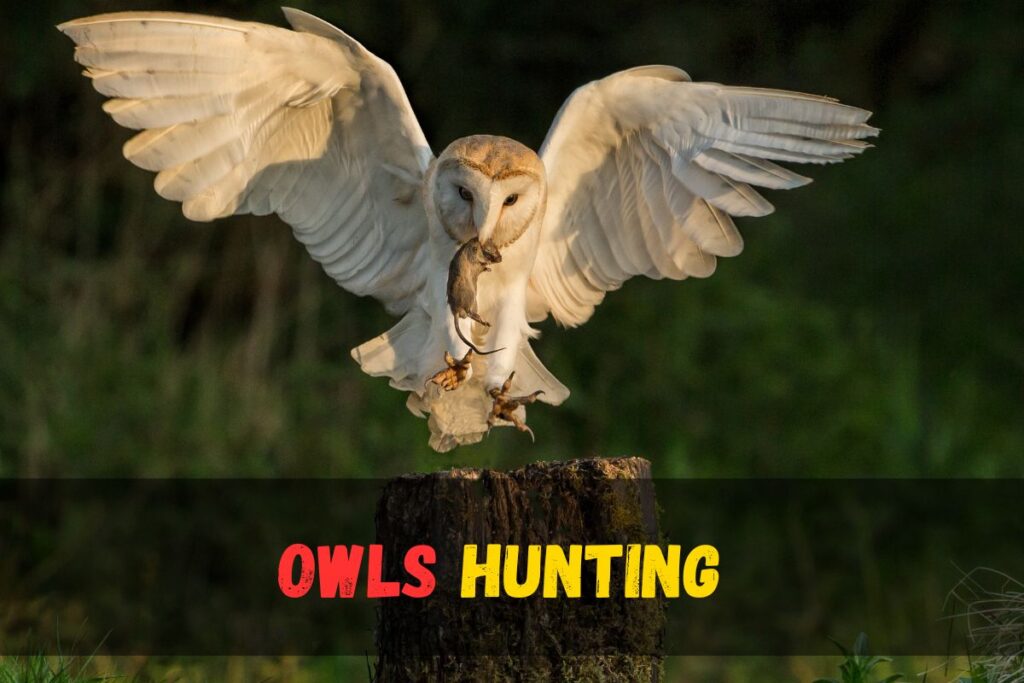How long are owls legs?
The appearance of owls is a source of fascination for many, with their distinctive characteristics capturing the imagination of bird enthusiasts and researchers alike. Owls are known for their round faces, large, forward-facing eyes, and feathers that enable them to fly silently through the night. These features, while intriguing, are just the tip of the iceberg when it comes to understanding these remarkable birds. Dive deeper into the world of owls, and you’ll discover that their unique appearance is intricately connected to their legs and, ultimately, to the central topic of how long are owls’ legs.
The length of an owl’s legs is a topic that often piques curiosity among enthusiasts and researchers in ornithology. Observing various owl species, one can discern a remarkable range in leg length, which varies according to the owl’s specific adaptations to its environment. These lengths can span from approximately 10 centimeters (equivalent to 4 inches) to 30 centimeters (or 12 inches). Notably, some of the most extensive owl species, such as the Great Grey Owl and the Eurasian Eagle Owl, possess leg lengths that extend up to 38 centimeters, which is equivalent to 15 inches Understanding the morphology of an owl’s legs involves exploring the interplay between the leg length and its hunting behavior, habitat, and evolutionary history.

The study of an owl’s leg proportions holds significance in understanding its predatory prowess. Owls, being primarily nocturnal hunters, rely on their legs not just for mobility but also for capturing prey. The interrelation between leg length, talon size, and hunting strategies is a subject of fascination among researchers. A longer-legged owl may exhibit an advantage in capturing ground-dwelling prey, while a shorter-legged owl may excel in maneuvering through thick foliage for ambush hunting.
Anatomy of Owl Legs
The anatomy of owl legs is a marvel of adaptation to their nocturnal hunting lifestyle. From their length and feather covering to their powerful talons and flexible joints, owl legs are finely tuned for capturing prey and perching in trees, allowing these birds of prey to excel in their roles as efficient hunters.

- Length of Owl Legs: Owl leg length varies among different species, but in general, they have relatively long legs compared to their body size. This feature is essential for perching and hunting. The length of an owl’s legs allows them to reach out and grasp prey or perch securely on tree branches.
- Feather Covering on Legs: Owls have feathers that cover their legs, extending down from their body. These feathers are known as “feathered tarsi.” They serve several purposes:
- Insulation: The feathers on the legs help insulate the owl from cold temperatures. As nocturnal birds, owls often hunt during the night when temperatures can drop significantly. The leg feathers help retain heat and keep the owl’s legs warm. Camouflage: The feathered legs also provide camouflage when the owl is perched in a tree. The mottled patterns on the feathers blend in with the bark and branches, making it more challenging for prey and potential predators to spot the owl.
- Stealth: The leg feathers contribute to the owl’s silent flight. Owls have specialized wing feathers that reduce noise during flight, and the feathered legs further help muffle sound by reducing turbulence as the air flows over them.
- Talons: Owls have powerful, sharp talons that are their primary hunting tools. These talons are curved and designed for capturing and holding onto prey. The length and sharpness of the talons can vary among owl species, with larger owls generally having larger and more formidable talons.
- Feet and Toes: Owl feet are zygodactyl, which means they have two toes pointing forward and two pointing backward. This unique arrangement provides a secure grip on branches and prey. The feet have scales that assist with grip and provide protection.
- Muscles: Owls possess powerful leg muscles that enable them to exert a strong grip on their prey and take off rapidly from the ground. These muscles are essential for both hunting and flying.
- Joint Flexibility: The flexibility of owl leg joints allows them to rotate their feet and talons in various directions. This adaptability is crucial for adjusting their grip on prey or branches and for maintaining balance while perched.

Adaptive Advantages
The anatomy of owl legs offers several adaptive advantages that are crucial for their survival and success as nocturnal predators:
- Effective Hunting: The long legs and sharp talons of owls allow them to reach and capture prey with precision. Their powerful grip ensures that once they catch prey, it’s challenging for them to escape, making them highly effective hunters.
- Silent Flight: The feathered legs, in combination with specialized wing feathers, contribute to owls’ ability to fly silently. This is advantageous for approaching prey stealthily, as their flights produce minimal noise, giving potential prey fewer auditory cues to detect their presence.
- Thermoregulation: The feather covering on their legs serves as insulation, helping owls maintain their body temperature in cold environments. This adaptation is particularly valuable for owls that hunt at night when temperatures drop, allowing them to remain active in chilly conditions.
- Camouflage: The feathered tarsi provide camouflage while owls are perched in trees. The mottled patterns of the feathers blend in with tree bark, helping owls remain inconspicuous to both prey and potential predators, which aids in successful hunting and avoiding detection.
- Secure Perching: The zygodactyl feet and flexible leg joints enable owls to perch securely on branches and other surfaces. This adaptability ensures they can rest comfortably and avoid falling while roosting high in trees.
What Do Owls Legs Look Like?
Owls’ legs, in contrast to their body size, are thin and relatively long. These legs are adorned with feathers and are often covered in scales or textured skin, typically appearing in light shades like yellow or gray. But it’s the remarkable talons that truly define the appearance of an owl’s legs. These sharp, long, curved, and razor-sharp talons serve a crucial purpose—they are perfectly designed for gripping and capturing prey with formidable force.
Do Owls Have Long Legs?
Owls vary in leg length depending on their habitat and hunting style. Some owl species possess relatively long legs when compared to their body size, while others exhibit shorter legs. The length of an owl’s legs is closely tied to its hunting behavior and the environment it dwells in.
For instance, owls that primarily hunt in open spaces such as grasslands or tundras tend to have longer legs. These longer legs enable them to navigate through tall grass or snow, facilitating their ability to reach prey on the ground.
Conversely, owls that specialize in hunting within forested areas often have shorter legs. These shorter legs make it easier for them to move through trees and dense vegetation, aiding in their hunting endeavors
Can Owls run on their legs?
Owls are not known for running on their legs. Owls are primarily birds of prey, and their legs are adapted for perching, grasping prey, and sometimes for walking or hopping on tree branches or the ground. They are not built for sustained running like many ground-dwelling birds or mammals. Owls are skilled fliers and rely on their strong wings and sharp talons for hunting and mobility.

Do owls walk backward?
Owls typically do not walk backward. They are not known for moving in a backward direction as a regular part of their locomotion. Owls have a unique and distinctive way of moving on the ground. They can hop, waddle, or walk forward, but they don’t have the same flexibility or agility for walking backward as some other animals might. Owls are well-suited for perching and flying, and their leg and foot structure is adapted to these purposes rather than backward walking.
Can owls stand on one leg?
Yes, owls are capable of standing on one leg. Just like many other birds, owls can perch and balance on one leg comfortably. This behavior is often seen when owls are resting, perching on tree branches, or even on the ground. It allows them to conserve energy and maintain stability while resting or observing their surroundings. Standing on one leg is a common and natural posture for owls when they are not actively hunting or flying.

Do Owl Knees Bend Backwards?
Yes, owls’ knees may bend backward, but in reality, what seems to be their knees bending backward is their ankle joint. This gives the impression that their legs are bending unusually. Owls have a unique skeletal structure where their knees are hidden under their feathers and not easily visible. The joint that appears to bend backward is their ankle joint, allowing their legs to bend in a way that can be mistaken for their knees. This adaptation aids in their perching abilities and hunting techniques but may give the impression that their knees bend in the opposite direction.
Why Do Owls Sleep on One Leg?
Owls do not typically sleep on one leg. The behavior of sleeping on one leg is more commonly associated with some other bird species, such as flamingos. Owls have a different sleeping posture. When owls sleep, they usually hunch down and tuck their heads under their wings to conserve warmth and maintain a compact posture. This helps them stay hidden and protected while they rest. The misconception of owls sleeping on one leg may arise from their occasional habit of standing on one leg while they are awake, which is a posture they use to conserve energy rather than during sleep.
Interesting Facts About Owls
1. Owls Hunt With Their Legs:
Owls are remarkable hunters, and what’s particularly fascinating is how they use their legs and talons to catch their prey. These talons, which are sharp, curved claws at the ends of their toes, are their primary tools for capturing and killing animals they hunt.

2. Their shinbones exceed the length of their thigh bones.
If you take a look at an owl’s legs, you’ll notice something interesting – their shins (the part between the knee and the ankle) are longer than their thighs (the part above the knee). This unique leg structure gives owls a mechanical advantage, making it easier for them to grasp and hold onto their prey.
3. Owls Can Go Fishing:
While not all owls are known for fishing, some species, like the fishing owl, have specialized in hunting fish. These owls have evolved to have skills and adaptations that make them efficient aquatic hunters.
4. Owls can securely grasp perches and prey with their toes:
Owls have what’s known as “zygodactyl” feet, which means they have two toes facing forward and two facing backward. This arrangement allows them to firmly grip branches, perches, and their prey, much like our fingers can grip objects.
5. Owls employ their feet in a manner akin to hands.
Owls are known for using their feet almost like hands. They can carry their food to their beaks, which is handy when they want to eat while perched on a tree branch. Additionally, if they feel threatened, they can use their sharp talons to defend themselves effectively.
FAQ’S
How big are owl feet?
Owl feet can vary in size depending on the species. The tarsal length, which refers to the length of the part of their leg that includes their feet, ranges from 54 to 80 mm (2.1 to 3.1 inches). Most owls typically have a fully spread foot span ranging around 20 cm (7.9 inches) from talon to talon on average. To put this in perspective, this is much larger compared to long-eared owls, which have a foot span of 8 cm (3.1 inches), barn owls with a foot span of 13 to 15 cm (5.1 to 5.9 inches), and even the great grey owl, which has a foot span of 18 cm (7.1 inches). So, owl feet can be quite substantial in size, especially in comparison to other owl species.
What is the average length of an owl?
To determine the average length of an owl, we can use the information extracted in
Step 1. The passage notes that owls share a similar size range with their diurnal counterparts, the hawks, ranging in length from approximately 13 to 70 cm (5 to 28 inches). To find the average length, we can add the minimum and maximum values together and divide by 2:
Average Length of an Owl = (13 cm + 70 cm) / 2 = 83 cm / 2 = 41.5 cm
So, the average length of an owl is approximately 41.5 centimeters.
Can owls go full 360?
No, owls cannot go full 360 degrees with their head rotation. It’s a common misconception that owls can turn their heads 360 degrees, but they are capable of turning their heads 270 degrees in either direction. This ability allows them to perform some pretty dramatic feats when it comes to checking out their environment. Owls are fascinating birds, especially as they are nocturnal predators with specialized feathers and are considered raptors in the bird kingdom.
What bird has the longest legs?
The black-winged stilt (Himantopus himantopus) boasts the longest legs in proportion to its body size among all bird species. Even though the ostrich has the longest legs among all living birds, the black-winged stilt holds the distinction of having the longest legs concerning its body size, making it the bird with the longest legs in proportion to its body.
Do owls blink eyes?
Yes, owls do blink their eyes. Owls are equipped with three eyelids, which include a normal upper and lower eyelid. The upper eyelid closes when the owl blinks, just like in many other animals, to protect their eyes. The lower eyelid closes when the owl is asleep, ensuring that their eyes are shielded and well-protected during rest.


